The Blue-billed Teal, scientifically known as Spatula hottentota, is a captivating waterfowl species that can be found in Tanzania’s diverse wetland habitats. With its unique blue bill and graceful demeanor, the Blue-billed Teal is a remarkable bird that captures the attention of birdwatchers and nature enthusiasts.
The Blue-billed Teal (Spatula hottentota) is a fascinating migratory resident bird of eastern and southern Africa, from Sudan and Ethiopia to Niger and Nigeria in the west and South Africa and Namibia in the south. It is sedentary in West Africa and Madagascar. With its striking appearance and distinct blue bill, this waterfowl species stands out among its feathered counterparts. The male Blue-billed Teal showcases a beautiful combination of cinnamon-brown feathers on its body, a dark chestnut head, and a bright blue bill. Females, on the other hand, exhibit a more subdued brown plumage with speckled patterns. These ducks inhabit freshwater wetlands, marshes, and shallow lakes, where they forage on a varied diet of aquatic plants, seeds, and small invertebrates. The Blue-billed Teal is known for its skittish nature, often taking flight at the slightest disturbance. Conservation efforts are crucial to protect their habitats, as they face threats such as habitat loss and hunting. By promoting awareness and conservation initiatives, we can contribute to the preservation of this remarkable species and ensure its continued presence in South American wetlands.
Blue-billed Teal: Bird Species profile
COMMON NAME: Blue-billed Teal
SWAHILI NAME: N/A
SCIENTIFIC NAME: Spatula hottentota
TYPE: Waterfowl
FOOD: Aquatic plants, seeds, insects, small invertebrates
HABITAT: Wetland habitats, including marshes, lakes, rivers, and seasonal pools
SIZE: The Blue-billed Teal is a medium-sized duck, with males and females exhibiting similar sizes. On average, they measure around 38-43 centimeters (15-17 inches) in length and have a wingspan of approximately 60-70 centimeters (24-28 inches).
AVERAGE LIFE SPAN IN THE NATURAL HABITAT: The average life span of Blue-billed Teals in their natural habitat is not precisely known. However, similar duck species typically have an average life span of 5 to 10 years.
ACTIVE: Blue-billed Teals are diurnal, meaning they are primarily active during the day. They engage in various activities such as foraging, preening, resting, and socializing.
GESTATION PERIOD: The gestation period or incubation period of Blue-billed Teals is approximately 25 to 28 days. This refers to the period from when the female starts incubating her eggs until they hatch.
WEIGHT: The weight of Blue-billed Teals varies between males and females. Males generally weigh around 400 to 600 grams (14 to 21 ounces), while females are slightly lighter, ranging from 300 to 500 grams (11 to 18 ounces).
Physical Characteristics
The Blue-billed Teal is a medium-sized dabbling duck, known for its elegant appearance. Both males and females exhibit distinctive plumage. Male Blue-billed Teals boast a striking combination of colors, with a rich chestnut-brown head and neck, contrasting beautifully with their grayish-blue body. They feature a vibrant blue bill, which gives them their name, and their wings display intricate patterns of blue, black, and white. Females, on the other hand, exhibit more subdued colors, with mottled brown plumage that aids in camouflage during nesting.
Habitat and Distribution
The Blue-billed Teal is primarily found in wetland habitats, including marshes, lakes, rivers, and seasonal pools. In Tanzania, these enchanting waterfowl can be observed in various locations, such as the Serengeti National Park, Lake Manyara, and the wetlands of Rubondo Island National Park. These habitats provide the necessary resources for the Blue-billed Teal, offering ample vegetation, shallow waters for foraging, and suitable nesting sites.
Behavior and Diet
Blue-billed Teals are known for their dabbling behavior, which involves tipping their bodies forward and immersing their heads in shallow water to feed on aquatic plants, seeds, insects, and small invertebrates. They are skilled filter-feeders, utilizing their specialized bill to filter out food particles from the water. These ducks are typically social and can be observed in small groups or pairs, often foraging and resting near the water’s edge.
Conservation Status and Threats
The Blue-billed Teal is categorized as a species of Least Concern on the IUCN Red List, suggesting that it is not currently facing significant population decline or immediate threats. However, habitat loss, wetland degradation, and human activities such as pollution and disturbance pose potential risks to the Blue-billed Teal and its wetland ecosystems. Conservation efforts that focus on the protection of wetland habitats, sustainable land-use practices, and raising awareness about the importance of these ecosystems are vital for ensuring the long-term survival of this captivating waterfowl.
Birdwatching and Conservation
Tanzania offers incredible opportunities for birdwatchers to observe the Blue-billed Teal in its natural habitat. If you are passionate about birdwatching, consider visiting renowned wetland areas such as Lake Manyara National Park, Serengeti National Park, and Rubondo Island National Park. These locations provide excellent chances to spot the Blue-billed Teal and other fascinating bird species. When engaging in birdwatching activities, always prioritize responsible practices by respecting the birds’ space, minimizing disturbance, and adhering to park regulations.
The Blue-billed Teal, Spatula hottentota, adds charm and beauty to Tanzania’s wetland ecosystems. Its elegant appearance and unique blue bill make it a prized sighting for birdwatchers and nature enthusiasts. By understanding its habitat, behavior, and conservation needs, we can appreciate the importance of preserving wetland habitats and safeguarding the future of this remarkable waterfowl species.
Where to Spot Blue-billed Teals in Tanzania:
Tanzania, with its diverse range of habitats and abundant birdlife, offers fantastic opportunities for birdwatchers to observe the magnificent Blue-billed Teal (Spatula hottentota) in its natural environment. If you’re eager to catch a glimpse of these captivating waterfowl, here are some top locations in Tanzania where you can increase your chances of spotting Blue-billed Teals.
1. Serengeti National Park
Renowned for its iconic savannah landscapes and incredible wildlife, Serengeti National Park is also home to a variety of water bodies and wetland habitats, providing a perfect haven for Blue-billed Teals. Head to the park’s marshy areas, such as the Grumeti River and the Seronera River Valley, where you may find these elegant ducks gracefully swimming and foraging among the aquatic vegetation.
2. Lake Manyara National Park
Nestled at the base of the Great Rift Valley, Lake Manyara National Park boasts a picturesque lake surrounded by lush greenery. This scenic park is a prime spot for encountering Blue-billed Teals, as they frequent the lake’s shallow waters and marshes. Explore the lake’s shoreline and lookout for these beautiful ducks among the reeds, alongside other fascinating bird species that call this park their home.
3. Rubondo Island National Park
Situated on the southwestern part of Lake Victoria, Rubondo Island National Park is a hidden gem for bird enthusiasts. This remote island sanctuary is an ideal habitat for Blue-billed Teals, offering a serene setting of dense forests, swamps, and small lakes. Take a boat excursion or explore the park’s nature trails to observe these alluring ducks in their natural surroundings.
4. Kilombero Valley Wetlands
The vast Kilombero Valley is a sprawling wetland complex that encompasses the Kilombero River and its associated floodplains. This region is a haven for waterfowl, including the Blue-billed Teals. Venture into the wetlands and marshy areas along the riverbanks to witness these ducks engaging in their feeding and socializing behaviors. The Kilombero Valley is a true paradise for birdwatchers seeking a diverse avian experience.
5. Other Wetland Areas
Tanzania is blessed with numerous wetland areas that serve as critical habitats for various bird species. Explore the wetlands around Lake Victoria, Lake Natron, and Lake Tanganyika, as well as the Ruaha River and Rufiji River systems. These rich ecosystems provide ample opportunities to encounter Blue-billed Teals and appreciate the incredible biodiversity
Birdwatching Safari Tips for Spotting Blue-billed Teals in Tanzania
Embarking on a birdwatching safari to spot the captivating Blue-billed Teals in Tanzania is a rewarding and memorable experience for any bird enthusiast. By planning ahead, seeking the assistance of knowledgeable guides, being patient and observant, and respecting wildlife and their habitats, you can optimize your chances of encountering these remarkable waterfowl and create cherished memories of your birdwatching adventure in Tanzania.
If you’re planning a birdwatching safari in Tanzania and hoping to spot the magnificent Blue-billed Teals (Spatula hottentota), here are some useful tips to enhance your birdwatching experience and increase your chances of encountering these stunning waterfowl.
1. Research and Plan Ahead
Before embarking on your birdwatching safari, conduct thorough research about the Blue-billed Teals, their preferred habitats, and their behavioral patterns. Familiarize yourself with the best locations in Tanzania where these ducks are commonly found. Plan your itinerary accordingly to optimize your time and opportunities for spotting them.
2. Engage a Knowledgeable Guide
Hiring an experienced and knowledgeable birdwatching guide is highly recommended. A professional guide will not only have in-depth knowledge about the local bird species, including the Blue-billed Teals, but they will also be familiar with the prime birdwatching spots in Tanzania. Their expertise and guidance will significantly enhance your chances of sighting these elusive ducks.
3. Timing is Key
Consider the time of year when planning your birdwatching safari. Blue-billed Teals can be observed in Tanzania throughout the year, but their presence may vary depending on the season. During the dry season, when water bodies shrink, these ducks may congregate in larger numbers around the remaining water sources, making them easier to locate.
4. Be Patient and Observant
Birdwatching requires patience and keen observation skills. Find a comfortable and inconspicuous spot near wetlands, lakes, or rivers where Blue-billed Teals are known to frequent. Stay still, quiet, and observant, allowing the ducks to become accustomed to your presence. Patiently scan the water surface and surrounding vegetation for any movement or signs of these beautiful waterfowl.
5. Use Appropriate Optics
Invest in good-quality binoculars or a spotting scope to enhance your birdwatching experience. These optics will allow you to observe Blue-billed Teals and other bird species from a distance without causing disturbance. Familiarize yourself with using the optics before your safari to maximize their effectiveness.
6. Learn Their Vocalizations
Blue-billed Teals have distinct vocalizations that can aid in their identification and location. Prior to your trip, listen to recordings or watch videos that feature the calls and vocalizations of these ducks. By familiarizing yourself with their sounds, you can increase your chances of locating them even when they are concealed within vegetation.
7. Respect Wildlife and their Habitat
While engaging in birdwatching, it is crucial to prioritize the well-being of the birds and their habitats. Observe birds from a distance, avoiding any disturbance or intrusion into their environment. Follow park regulations and guidelines, staying on designated paths or viewing areas. By practicing responsible birdwatching, you contribute to the conservation of Blue-billed Teals and their fragile ecosystems.
Frequently Asked Questions about Blue-billed Teals
Here are some commonly asked questions about Blue-billed Teals (Spatula hottentota), their characteristics, behavior, and habitat:
1. What is a Blue-billed Teal? The Blue-billed Teal is a species of waterfowl belonging to the duck family Anatidae. It is known for its striking blue bill, which sets it apart from other duck species. Blue-billed Teals are medium-sized ducks that inhabit wetland habitats and are found in various regions, including Tanzania.
2. What is the scientific name of the Blue-billed Teal? The scientific name of the Blue-billed Teal is Spatula hottentota. It was previously classified under the genus Anas but has since been reclassified to the genus Spatula.
3. Where can Blue-billed Teals be found? Blue-billed Teals are native to parts of Africa, including Tanzania. They are commonly found in wetland habitats such as marshes, lakes, rivers, and seasonal pools. Specific locations where they can be spotted in Tanzania include Serengeti National Park, Lake Manyara National Park, Rubondo Island National Park, and the Kilombero Valley Wetlands.
4. What do Blue-billed Teals eat? Blue-billed Teals are primarily herbivorous, feeding on aquatic plants, seeds, and grasses. They also consume insects and small invertebrates as part of their diet. Their specialized bill allows them to filter small food items from the water.
5. How big are Blue-billed Teals? Blue-billed Teals are medium-sized ducks, with males and females displaying similar sizes. On average, they measure around 38-43 centimeters (15-17 inches) in length and have a wingspan of approximately 60-70 centimeters (24-28 inches).
6. What is the average lifespan of Blue-billed Teals in their natural habitat? The average lifespan of Blue-billed Teals in their natural habitat is not precisely known. However, similar duck species typically have an average lifespan of 5 to 10 years.
7. Are Blue-billed Teals active during the day or night? Blue-billed Teals are diurnal, meaning they are primarily active during the day. They engage in various activities such as foraging, preening, resting, and socializing during daylight hours.
8. How long is the gestation period of Blue-billed Teals? The gestation period or incubation period of Blue-billed Teals is approximately 25 to 28 days. This refers to the period from when the female starts incubating her eggs until they hatch.
9. Is there any significant sexual dimorphism in Blue-billed Teals? Blue-billed Teals exhibit minimal sexual dimorphism, with males and females displaying similar plumage. However, males may possess more vibrant coloration and have slightly larger body size compared to females.
10. Are Blue-billed Teals a threatened species? Blue-billed Teals are currently classified as a species of Least Concern by the International Union for Conservation of Nature (IUCN). However, like many waterfowl, they face threats such as habitat loss, pollution, and hunting in certain regions. Continued conservation efforts are essential to ensure their long-term survival.
We hope these FAQs have provided you with valuable insights into the fascinating world of Blue-billed Teals. If you have further questions or seek more information, don’t hesitate to consult reliable birding resources or reach out to local birdwatching experts.

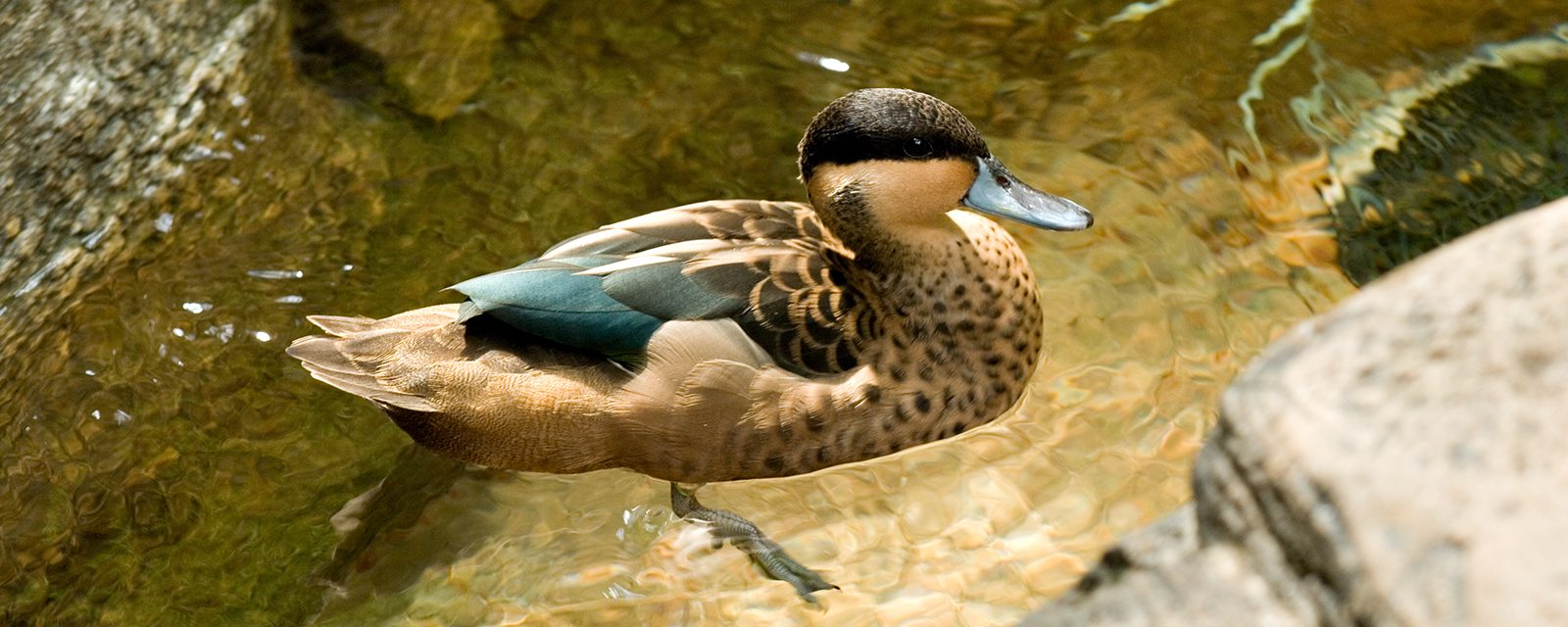
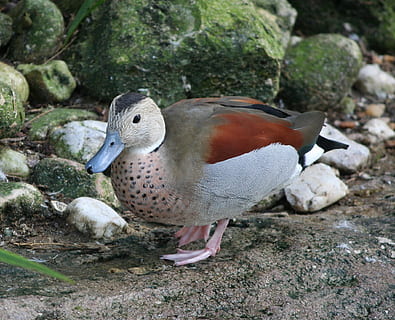
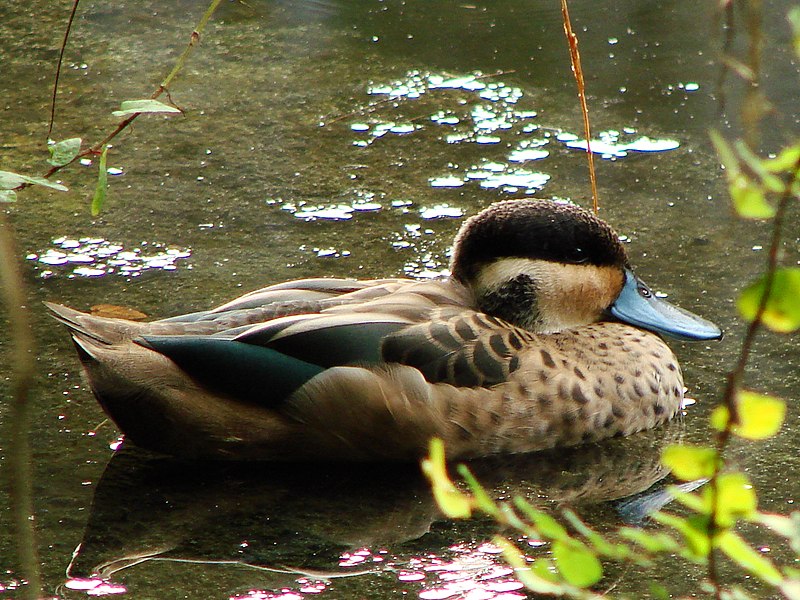
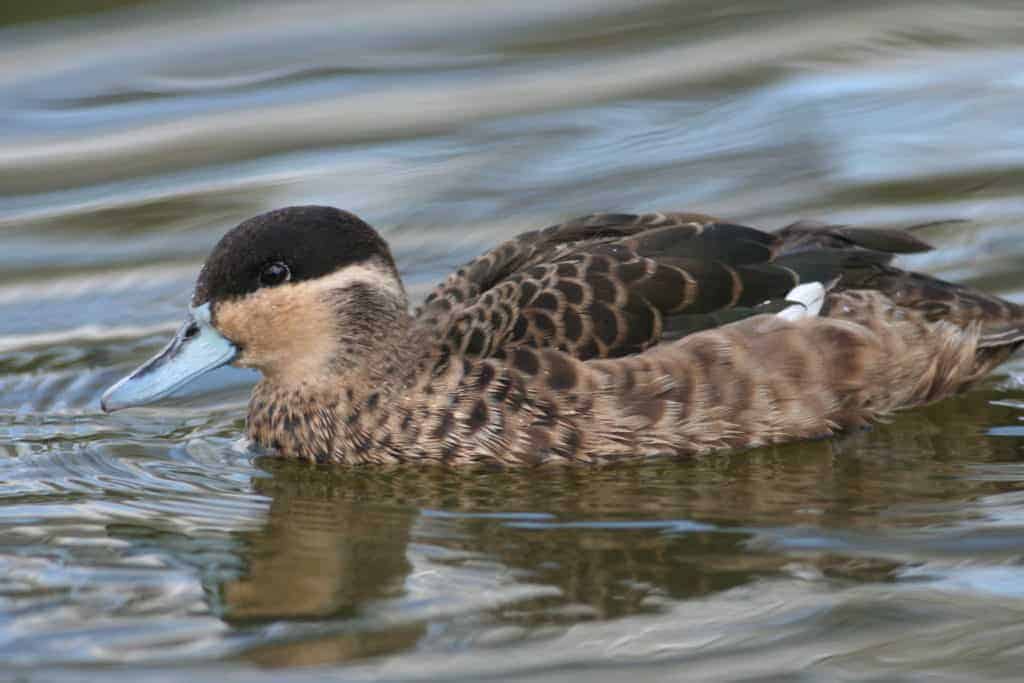
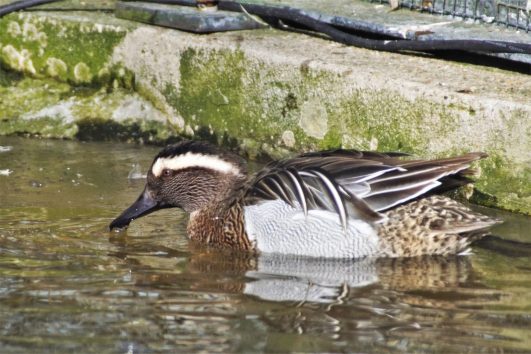

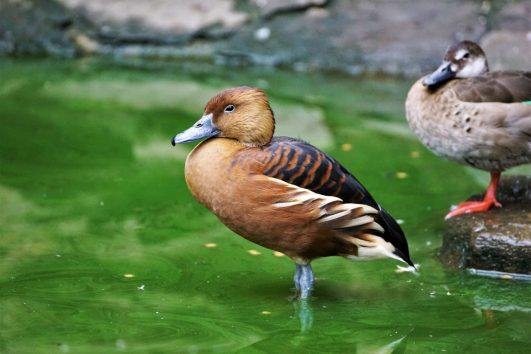
Tour Reviews
There are no reviews yet.
Leave a Review